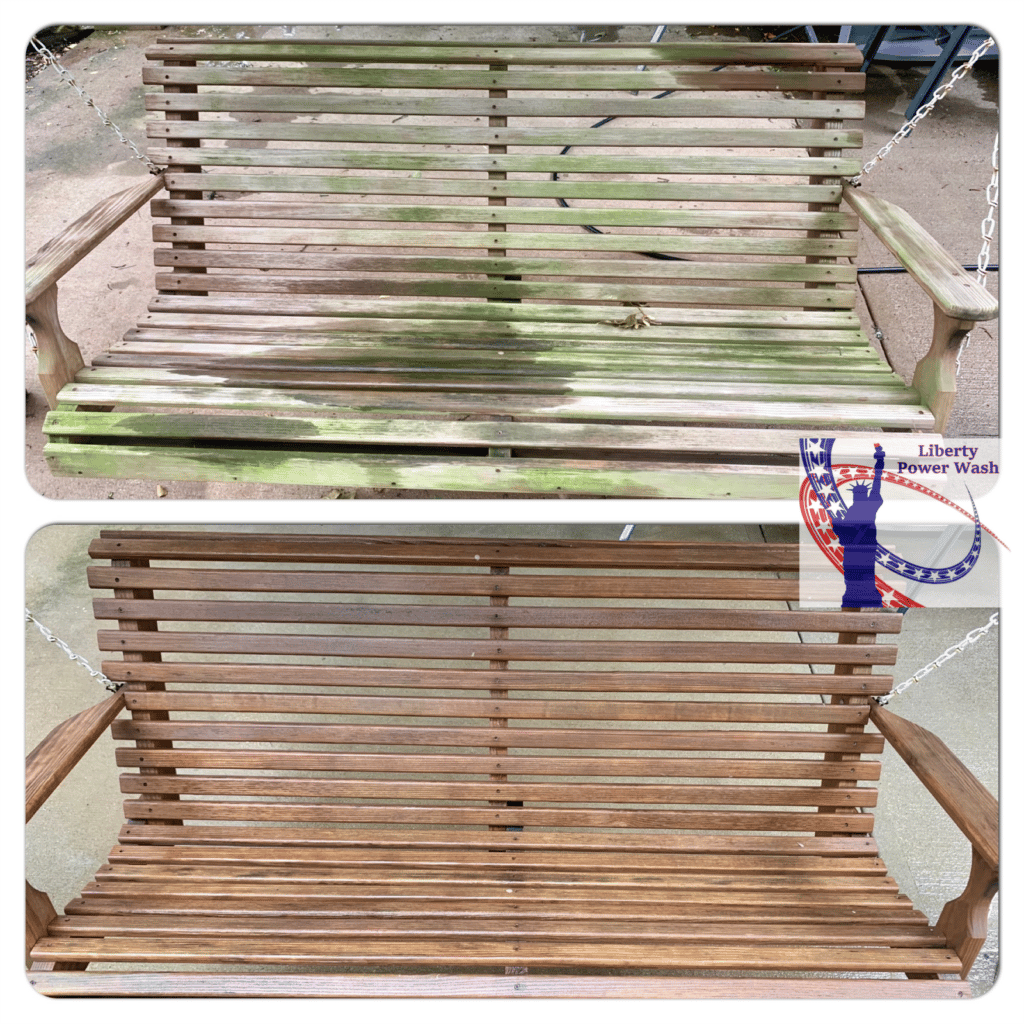Rot is a term used to describe the decay caused by microorganisms such as bacteria and fungi. It is a natural phenomenon but it makes property owners’ jobs more difficult. It eats away at wooden structures, marring their appearance and their structural integrity. Removing rot before pressure washing may not sound like a picnic, but it is vital before you can begin more fun projects like painting.

The Dangers of Wood Rot
Rot can develop on wood surfaces when the moisture content is relatively high. This means that it commonly develops near the ground, underneath wet or dripping foliage, or near gutters. A wooden fence or deck can soak up moisture from the damp earth, especially in the wetter seasons of the year. Though wood is treated before construction to prevent rot, decay can still develop when conditions are right.
Rot weakens wooden structures like fences and decks, compromising their structural integrity. When even a small amount of rot takes hold, it spreads quickly and wreaks havoc. Because of this, wood rot needs to be removed completely before pressure washing and painting a fence or deck.
Simply painting over rot will not fix it. In fact, if you paint over wood rot, the paint will peel more quickly than it would naturally, allowing more moisture to soak in. Preventing further saturation is not why removing rot before pressure washing is so important. That precaution is more about minimizing damage, but more on that below.
What to Look for
Wood rot ranges from very unsightly to practically invisible. As mentioned above, it thrives in damp patches of wood, so keep an eye out for moist areas of your deck or fence.
As rot begins to take hold, the affected wood will begin to discolor. This stage is also associated with weakening. If you have a patch you think is on its way to rotting, probe at it with a screwdriver. Soft patches that are easily breached have already fallen victim to rot.
If fungal growth has progressed to dangerous levels, you will be able to see it plainly, looking a bit like cotton wool. What’s more, mushrooms may also sprout, a definite indication of rot.

Why Is Removing Rot Before Pressure Washing Wood Important?
If the wood has sustained serious damage from rot, pressure washing can inflict even more damage, ripping the fragile wood apart. That’s why it’s important to either repair or replace damaged wood panels before washing your fence or deck. While removing rot before pressure washing is not always convenient, it is more convenient than replacing wood mutilated by high-pressured water.
How to Repair a Fence with Wood Rot
Because rot is the result of decay, it is not a problem you can simply scrub away. It is the physical deterioration of wood, and no amount of soap and water can regrow the cellulose that the fungi have consumed. However, if you catch rot in its tracks before it has time to do a lot of damage, usually you can patch up the problem places.
The first step is to kill the troublemaking microbes causing the damage. This can often be accomplished by spreading antifreeze on affected areas. Once the offending pests are taken care of, you can also fill in any holes or channels in the wood with epoxy or wood glue. This will reinforce the planks.
If the damage is too far gone for cosmetic repairs to be worthwhile, the solution is to replace the wood. This is necessary if large sections of wood have rotted or if rot has weakened the wood beyond help. You may be able to get away with replacing single panels, or you may have to replace entire sections of your deck or fence.

Preventing Rot
The best alternative to removing rot before pressure washing is preventing any decay in the first place. There are many ways to accomplish this, from methods for treating your wooden structures to landscaping.
Keep plant life off of your wood. Plants contain a lot of moisture and can trap it against wooden structures, creating the perfect breeding ground for rot. Cut back the verge so you don’t have to deal with removing rot before pressure washing.
You can’t hold back the rain or frost, but you can prepare the wood to withstand it. Painting or staining your wood is a good way to help keep moisture out. Paint sits on the surface and acts as a barrier while stains penetrate the wood itself.
You can help keep rot at bay by closing off gaps in the wood. You can do this with latex exterior caulk. This should be refreshed every few years or so for best results.
If you haven’t yet installed your fence, consider opting for pressure-treated wood. When wood is treated before it is installed, it is placed in a pressure chamber to change it chemically. This makes the wood more durable and less prone to decay. If you are still worried about rot, there are many non-wood alternative fence options available, including vinyl, metal, and stone.
